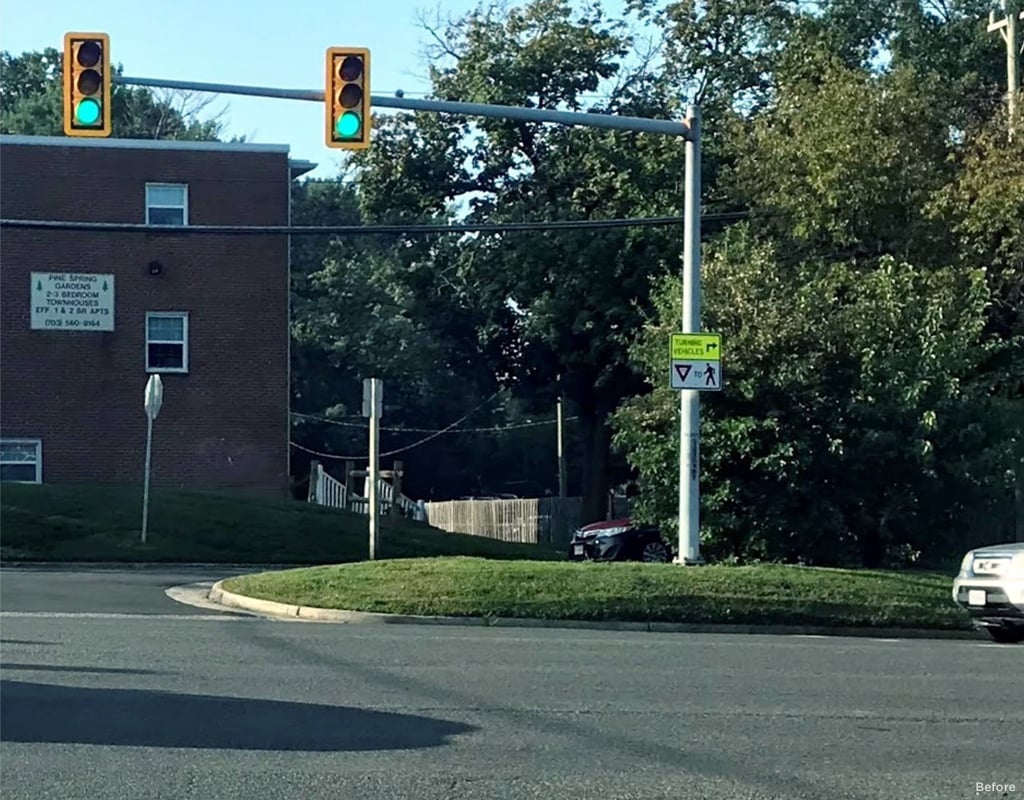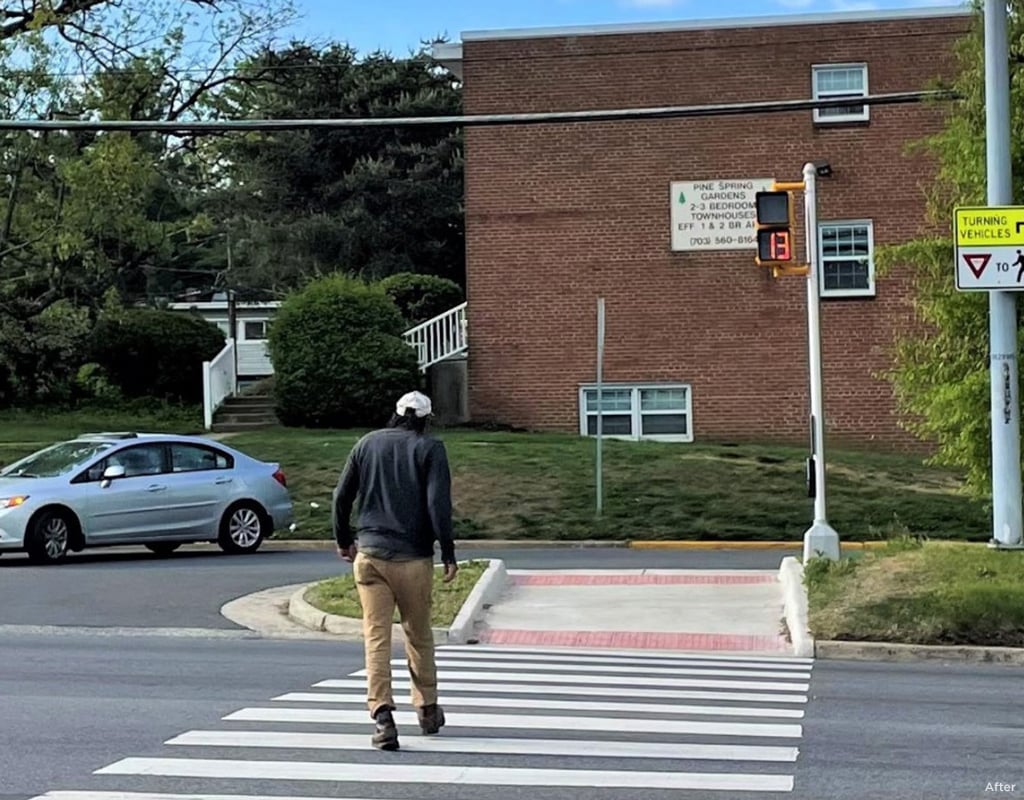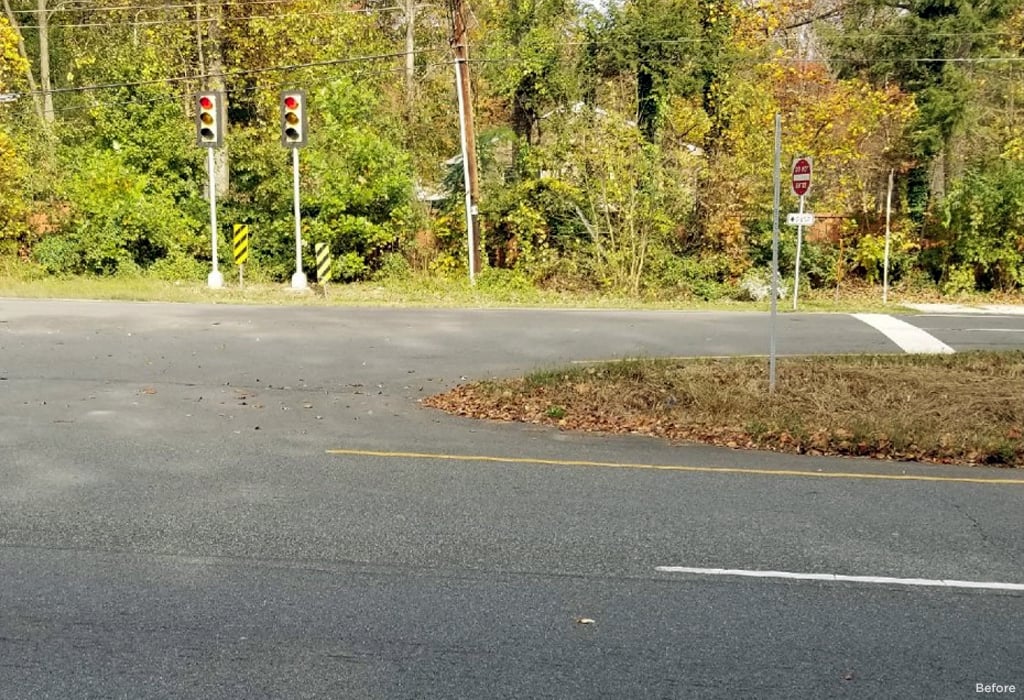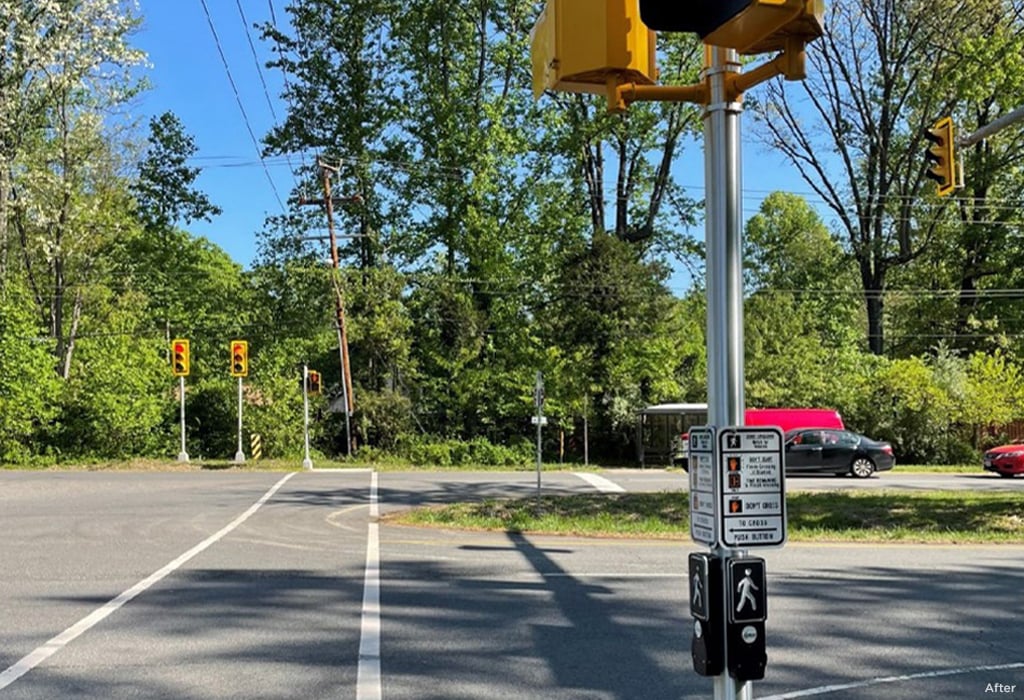
In recent years, the Virginia Department of Transportation (VDOT) shifted its focus for their Virginia Highway Safety Improvement Program—prioritizing low-cost, widely deployed systemic safety improvements over large capital projects at individual spot locations. This data-informed change in statewide safety management focuses on enhancing transportation safety by identifying and addressing high-crash risk roadway features with low-cost safety enhancements. VHB partnered with VDOT to deploy the important programmatic shift, providing insight on safety planning, program management, project prioritization, countermeasure cost estimates, design, and implementation.
One of the key factors behind the success of the VHSIP is its strategic focus on cost-effective safety measures that can be implemented widely on public roads throughout the Commonwealth. By prioritizing widely applicable interventions such as improved road signage, upgraded traffic signals, enhanced pavement markings, and the installation of rumble strips and guardrails, VDOT can maximize the lives saved with the available State and Federal safety funding. The first two phases of this program resulted in programmed funding for the following initiatives:
- High-Visibility Signal Backplates (HVSB): 3,105 locations
- Flashing Yellow Arrow (FYA): 3,331 locations
- Pedestrian Crossing Improvements: 989 locations
- Centerline Rumble Strip: 2,242 miles
- Edgeline Rumble Strip/Stripes: 3,758 miles
- Curve Delineation: 2,289 Locations
- Unsignalized Intersection Improvements: 1,621 locations
- Safety Edge: 33,172 miles
- Two-Lane Rural Roads: 2,066 miles
Executing this multifaceted project required education, communication, data collection, and project tracking across all VDOT Districts. VHB was a critical partner to VDOT in developing, evolving, managing, and delivering the programmatic changes throughout the state. VHB created a communication tool between the Districts and Central Office to help staff stay informed throughout the implementation process and initiated a new program of direct technical assistance to local agencies.


“VHB not only offered safety planning and program management for the VHSIP, but engineering support, technical guidance, and design tools for VDOT Districts,” said Chris Daily, PE, Transportation Manager. "Our fully integrated approach and close collaboration with VDOT helped promptly address critical safety needs and swiftly implement life-saving measures across the state’s vast urban and rural roadway network.”
VHB’s leadership in program planning activities, both in safety planning and engineering program support, played a critical role in cohesively delivering the infrastructure improvements statewide. At the District level, VHB’s understanding of important design elements for safety countermeasures and knowledge of processes helped meet funding schedule requirements.
“By leading strategically, we were able to expedite a large volume of design and construction work, addressing technical, programmatic, and contract-level needs efficiently,” said Christine Potocki, PE, PTOE, Senior Transportation Engineer. “We were able to prepare design plans and support the Districts throughout construction, which included designing more than 700 traffic signal modification plans and making improvements to more than 300 miles of rural roadways.”
Looking ahead, VDOT plans to continue expanding the VHSIP systemic initiatives, incorporating new technologies and data-informed strategies to further enhance road safety. This vital collaboration between planning and delivery staff will help VDOT address emerging challenges and leverage the latest advancements in transportation safety.
The program was recognized by VHB with its prestigious company 2024 RISE Award, highlighting the project’s success and significant positive impact on transportation safety.
Connect with one of the Project Managers who helped lead this successful program: Michelle Cavucci, Chris Daily, Mike Glickman, Elissa Goughnour, Christine Potocki, and Dana Slone.




